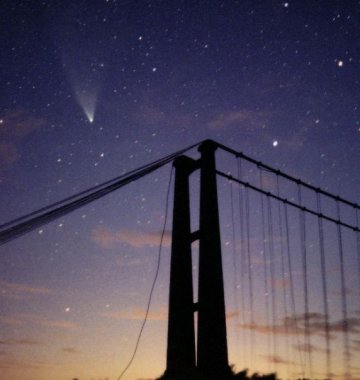 Did you sleep through the auroras of Dec. 14th? Next time get a wake-up call: Spaceweather PHONE.
Did you sleep through the auroras of Dec. 14th? Next time get a wake-up call: Spaceweather PHONE.
SOUTH POLE FLYBY: Today, the ESA-NASA Ulysses spacecraft is flying over uncharted territory--the mysterious South Pole of the sun: full story.
SUNSET PLANETS: "This evening my children joined me to see Venus and Mercury together in the sunset," says photographer P-M Hedén of Vallentuna, Sweden. "I explained that these are planets not stars, so they sat down together and watched for several minutes."

Photo details: Canon Digital Rebel XT, Sigma 30mm lens, f/1.8
This is a great week to enjoy the two planets. Mercury reaches its maximum elongation from the sun on Feb. 7th--that's tonight!--making it unusually easy to see and a charming companion for always-bright Venus: finder chart.
more images: from Stephen Meeks of Conway, Arkansas; from Martin McKenna of Maghera, N. Ireland; from Eugene Miller of Brooklyn, New York; from Linton Guise of Bedford School, England.
COMET MCNAUGHT: 60 seconds. That's about how long it takes to make a beautiful photo of Comet McNaught. This one-minute exposure, taken last night, comes from Ian Cooper of Opiki, Manawatu, New Zealand:

"I caught the comet behind a derelict swing bridge across the Manawatu River," says Cooper. "The tail was 20 degrees long and as much as 8 degrees wide."
Comet McNaught is fading as it recedes from Earth--"now around magnitude +3.6, equal in brightness to the star Beta Indi," Cooper estimates. It is 2500 times dimmer than the mid-January maximum, but still an easy target for off-the-shelf digital cameras.
Comet McNaught Photo Gallery
[finder chart] [ephemeris] [comet camera]

